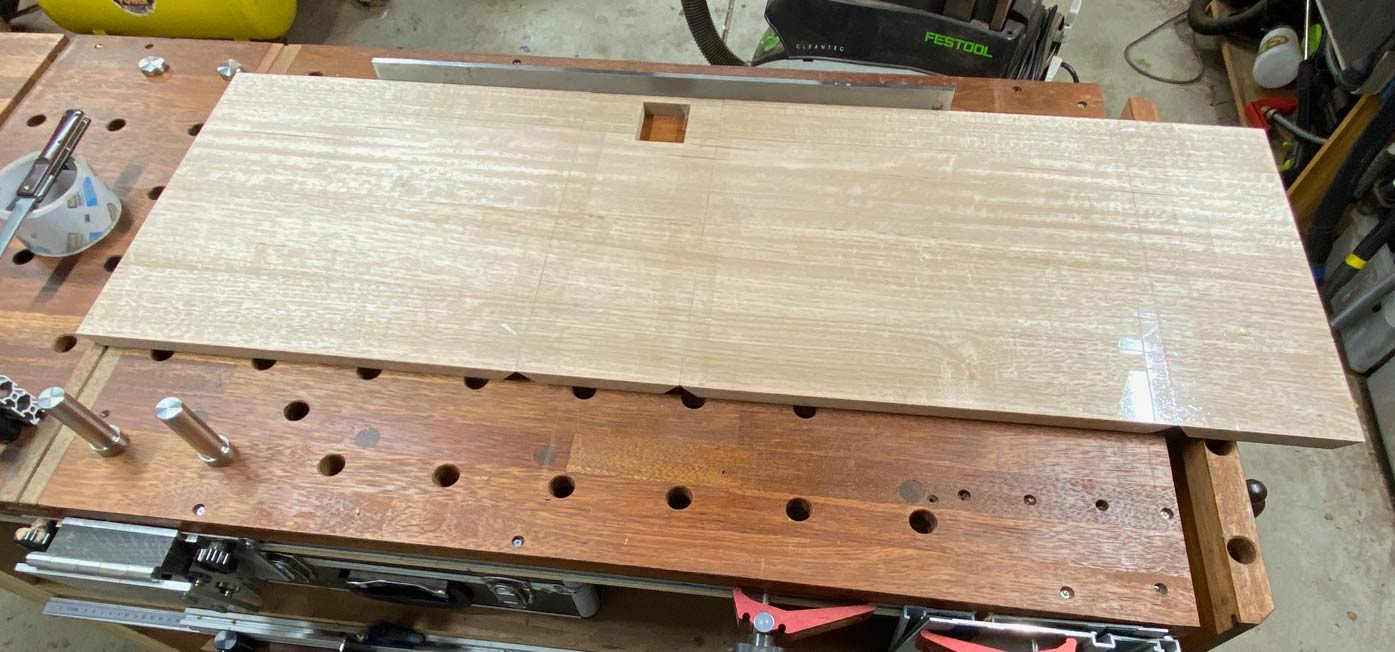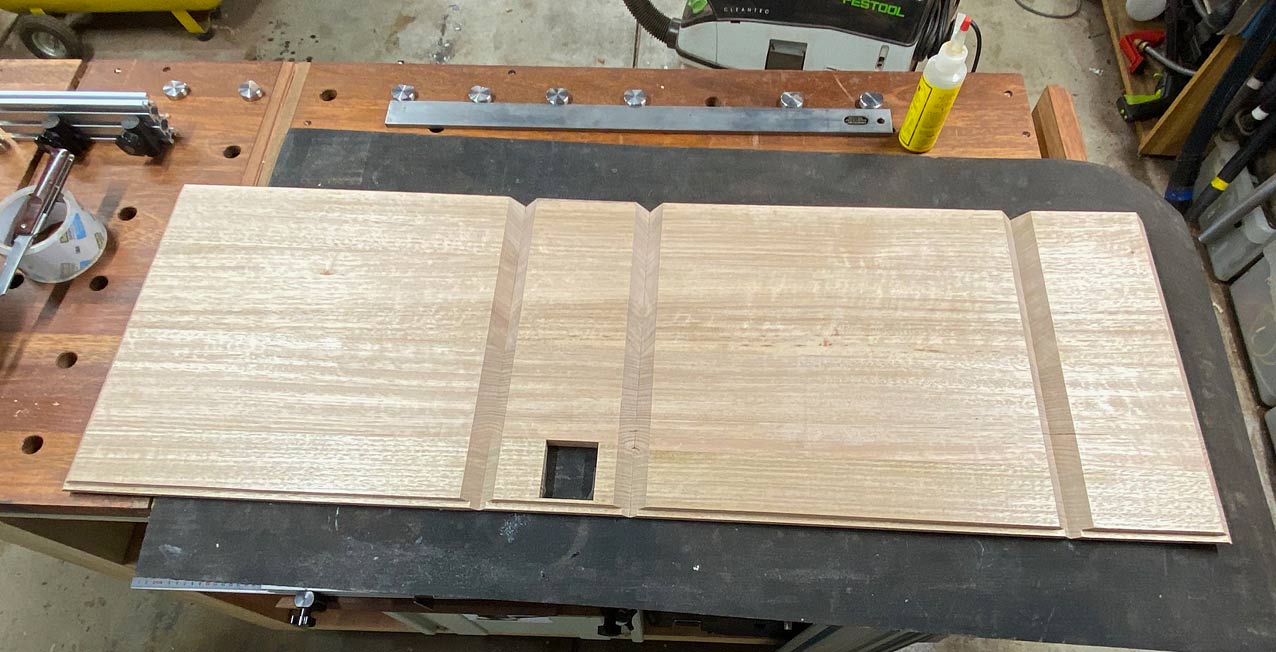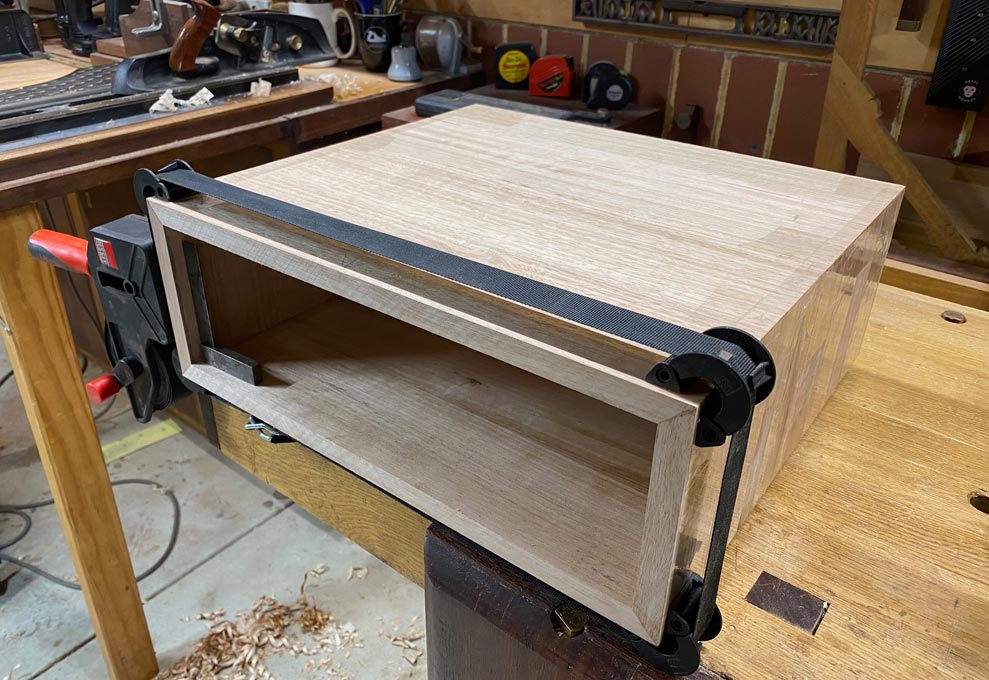- Joined
- 17 Aug 2021
- Messages
- 55
- Reaction score
- 16
Hi all - I need some help from people with more experience and wisdom than me (that'll be most of yo, I expect).
I'm making a wooden trinket/gift box, 200mm on a side, 25mm oak. It's my first serious attempt at precision woodworking and I've run into a problem (well - many problems actually, but every day's a schoolday around my workshop). I expect I approached this in a suboptimal way from the start, but I'd like to try and make to work, if that's feasible.
I cut and glued the sides (simple mitre joint, since it doesn't need massive strength) and it turns out that the cuts weren't quite precise enough. As a result in a couple of places, where the sides come together, the joint isn't perfectly flat. The differences is very small - 0.5mm or less; the edges themselves are flat and square. The reason that's a problem is that the design currently has the box sitting on a flat base and the imperfection means that there's are a couple of visible gaps where the sides meet the base.
I've thought of various approaches:1 Belt sander and sand the edges flat - but how to ensure I don't unflatten/unsquare the edges
1. Plane the joint flat - not sure that planing edge of 25mm oak is a good way to go
2. Router or table saw to shave a small amount all round - would require multiple passes and might be too rough and ready
3. Rout or chisel a square groove in the base into which the sides slot - requires a level or precision I might not have
4. Change the design and cut the base to fit inside the box. Also requires precision, but probably easier to achieve than idea 4
5. Break apart the sides and clean them up to make a perfect fit. Not sure of the best way to do that without causing more damage
6. Throw it away and start again
All suggestions welcome, and thanks in advance
I'm making a wooden trinket/gift box, 200mm on a side, 25mm oak. It's my first serious attempt at precision woodworking and I've run into a problem (well - many problems actually, but every day's a schoolday around my workshop). I expect I approached this in a suboptimal way from the start, but I'd like to try and make to work, if that's feasible.
I cut and glued the sides (simple mitre joint, since it doesn't need massive strength) and it turns out that the cuts weren't quite precise enough. As a result in a couple of places, where the sides come together, the joint isn't perfectly flat. The differences is very small - 0.5mm or less; the edges themselves are flat and square. The reason that's a problem is that the design currently has the box sitting on a flat base and the imperfection means that there's are a couple of visible gaps where the sides meet the base.
I've thought of various approaches:1 Belt sander and sand the edges flat - but how to ensure I don't unflatten/unsquare the edges
1. Plane the joint flat - not sure that planing edge of 25mm oak is a good way to go
2. Router or table saw to shave a small amount all round - would require multiple passes and might be too rough and ready
3. Rout or chisel a square groove in the base into which the sides slot - requires a level or precision I might not have
4. Change the design and cut the base to fit inside the box. Also requires precision, but probably easier to achieve than idea 4
5. Break apart the sides and clean them up to make a perfect fit. Not sure of the best way to do that without causing more damage
6. Throw it away and start again
All suggestions welcome, and thanks in advance








